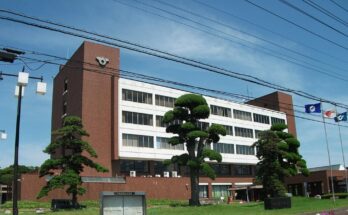The state of the old paintings does not seem so serious when viewed from the floor of room 16 of the National Art Museum of Catalonia (MNAC), despite the confusion of that negative photographic effect left by the flames which in 1936 burned down the chapter house of the Sijena Monastery and which, in addition to burning the roof, destroyed the chromatic nobility of its murals. But the images taken up close highlight its weak points: fissures, microeczema and flaking, as well as detachments already completed which have exposed the previous layers. The museum’s technicians have recognized around 700 of these critical issues, in the information sent to the court, on the 130 square meters of 12th century frescoes since they began taking an inventory last June following the Supreme Court ruling that forced their return to Aragon.
Several reports that have analyzed the paintings have warned of the risk of moving the Aragonese Romanesque jewel given the delicate state of its condition. A person who knows the murals well and who, like two other techniques, speaks to EL PAÍS on condition of anonymity, is very explicit in describing the possible effects of their movement: “Whoever undertakes the work could find himself with a rain of paint.” His opinion clashes with that offered by the Aragonese Government, which a week ago argued that the transfer can be carried out “without extraordinary risks”, that “the state of the paintings is very stable, very similar to that of the original paintings” and that “the canvases on which they are placed do not present significant risks for their transfer”, according to the general director of Culture, Pedro Olloqui. A report by the International Center for the Study of the Conservation and Restoration of Cultural Heritage (Iccrom) however recommends “a thorough assessment” before any transfer and warns: “Paintings are vulnerable to further deterioration, particularly in the event of environmental changes or physical disturbances (shock, vibration).”
The MNAC continues to refuse to give in and asks not to transfer them, but an order from the judge in charge of the execution of the sentence indicated last week his intention to give “effective execution” of the sentence. Pessimism has crept into the small group dedicated to heritage conservation in Catalonia. They take for granted the irreparable damage to a structure that combines the vestiges of the original paintings, in reality a thin layer between 0.3 and 0.5 millimeters, with the recreation in the unsalvageable pieces that the Gudiol brothers created to make the work intelligible to the eyes of non-experts. In recent days, regarding the Sijena dispute, a technician from the Center for Restoration of Movable Goods of Catalonia, Pere Rovira, warned that the transfer could lead to losses on the works of up to 20%. No one else has so far dared to make such a damage assessment. However, all the technical reports known so far warn that it is necessary to carry out a detailed risk analysis before proceeding with the transfer of this Property of Cultural Interest, the highest level of protection by the Ministry of Culture, which has not prepared any study on whether or not to carry out the sentence.
Neither the Aragonese government nor the MNAC, responsible for the work, have explained how the dismantling of the work will proceed. Olloqui announced that his team intends to transfer it to Aragon by breaking it down into 72 pieces, the largest of which will be just over three meters long. It is the number of ceilings created from the reconstruction of the aggressive paint stripping carried out during the Civil War with the strain. Between the 40s and 50s they were placed on the current ceilings, while the missing parts were redesigned, and in 1995 they were definitively installed in room 16 of the museum where they are exhibited today. This fragmentation, however, is not so simple. Each face is a puzzle which, in the case of the five arches, is a triple puzzle made up of the two ashlars and the intrados.
When the technicians have to begin dismantling the murals, they will have to deal with cutting about forty border areas filled with stucco that join the different intrados and the faces of the ashlars with the intrados. Like everything in delicate work, they will have to undertake the work with a scalpel, probably with a new blade in each segment, and with care that the cut does not also tear the centuries-old and fragile tissues on which the paint rests. There are two risks in that first operation. One thing is not known: whether the filler to be removed is mounted on the original paint and, if so, will it drag it when it comes off. Another, facilitated by the images created: areas that will have to be sectioned where the painting, swollen, has detached from the fabric and, therefore, once cut, will remain in the air.
Once these cuts have been made you will need to loosen the existing bolts on the back. And what is perhaps the other most delicate task will be undertaken: the support nails for the frame. Most of them are hidden behind paint, so in many cases they have to be detected with magnets. Given the impossibility of extracting them from the pictorial part, they will have to be sawn from the back. Some sources consulted speak of more than 5,000 tips. The same thing happens with some bars that join the pairs of segments from behind, which also have to pass through the saw. This mechanical work will cause vibrations and additional stress to the work, tensions that will be repeated when a ceiling is permanently separated from surrounding ones.
Given the risk of paint precipitation due to vibrations, before starting work it will be necessary to consolidate with protection bands those 700 points considered most critical, weak points which the expert Simona Sajeva explained in a video. The experts explain that the cocktail formed by the paints (over the wood there is a flour paste, on which the two coarse fabrics used in the 1940s rest, plus a layer of caseinate, the original paints and the remains of the glue used for the strain and a subsequent protective wax) complicates the choice of the soluble glue that will be used to fix the protection strips due to its possible side effects. The cracked reconstructions with Gudiol plaster (35% of the work), due to its high ability to absorb humidity, make this choice even more difficult, which must be made with the long term in mind.
The three specialists consulted explain that the technicians who undertake these jobs have to face a lot of unknowns: once in the elevator or in the workshop, unexpected problems will arise. There are no previous references to take example from. No other work of the size of Sijena’s paintings has been moved and none in the physical and chemical conditions in which the flames left that amalgam of 800 years of life, which reacts aggressively to environmental changes, in temperature but above all in humidity.
In the reports sent to the judge, the MNAC deemed 29 weeks necessary for all this work (in total there is an 18-month timetable which includes other diagnostic and tender tasks). It is not even known whether these deadlines are possible, although Aragón believes that all the work could be ready in seven months. “All this is fantasy,” sums up one of the sources consulted on the dismantling work in disbelief. Upon departure of each package from the MNAC, a detailed report must be provided on the state of each piece signed by a manager of the Catalan museum and another of the Aragonese government, who will analyze its contents again upon arrival at the destination after 230 kilometers by truck. And then redo what was undone: put it back together as it is. If conditions permit.



